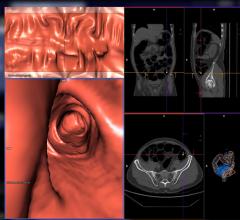October 3, 2007 - According to the study by the New England Journal of Medicine(NEJM), conclusions made were that primary CTC and OC screening strategies ended in similar detection rates for advanced neoplasia, though the numbers of polypectomies and complications were smaller in the CTC group, supporting the use of CTC as a primary screening test before therapeutic OC.
Results from the study, reported by NEJM:
“During CTC and OC screening, 123 and 121 advanced neoplasms were found, including 12 and 4 invasive cancers, respectively. The referral rate for OC in the primary CTC screening group was 7.9 percent (246 of 3120 patients.) Advanced neoplasia was confirmed in 100 of the 3120 patients in the CTC group (3.2 percent) and in 107 of the 3163 patients in the OC group (3.4 percent), not including 158 patients with 193 unresected CTC-deleted polyps of six to nine millimeters who were undergoing surveillance. The total numbers of polyps removed in the CTC and OC groups were 561 and 2434, respectively. There were seven colonic perforations in the OC group and none in the CTC group.”
According to the American Cancer Society (ACS), colorectal cancer is the third most common cancer in the western world. It is estimated that in 2007, nearly 154, 000 cases of colon and rectal cancer will be diagnosed in the U.S. and approximately 52,000 deaths will occur from the disease; however, only 44 percent of the eligible population undergoes any type of colorectal cancer exam. Many reasons have been identified for the lack of proactivity on the part of the population, with key ones being patient comfort, bowel preparation and cost being the most common.
Because most colorectal cancers grow slowly from precancerous adenomas the continued high prevalence of colon cancer is alarming. Analysis of data from the National Polyp Study showed that an average of 5.5 years is required for the transformation of a large adenomatous polyp into cancer. Further, additional studies have found that polyps less than 10mm will, on average, take 10 years to become cancerous. The consequence is that a proper, high sensitivity, widely accepted test has great potential to impact this disease that kills thousands every year.
For more information: www.nejm.org


 February 06, 2024
February 06, 2024 








